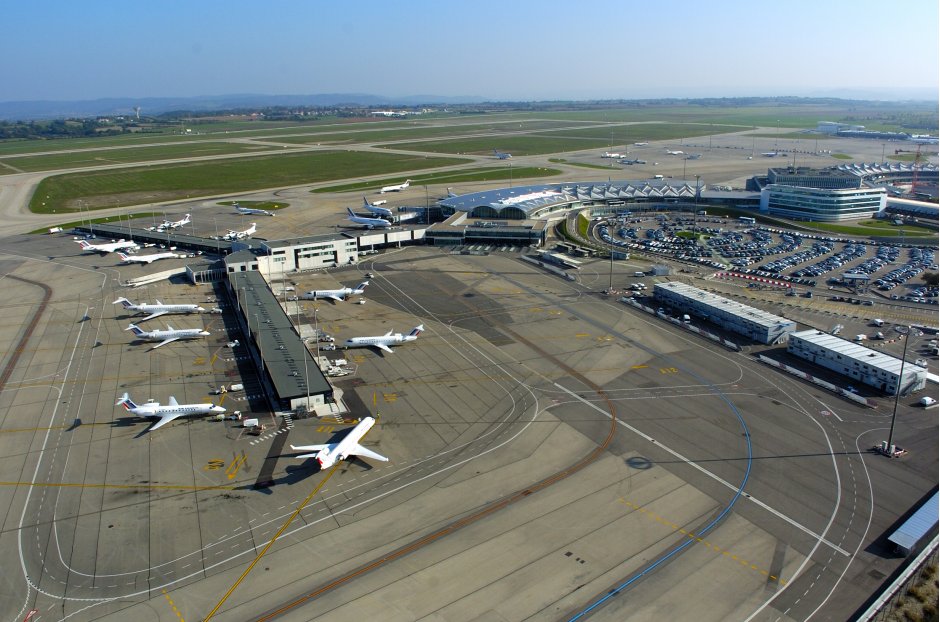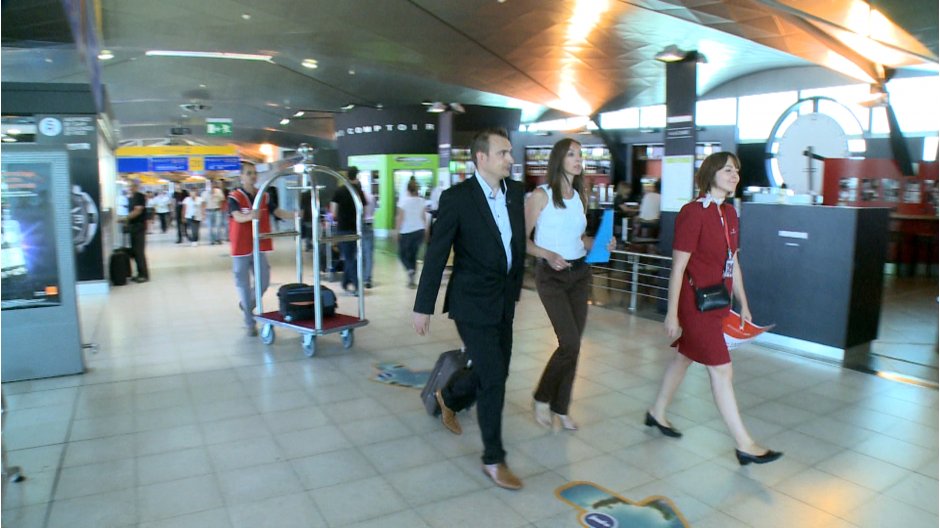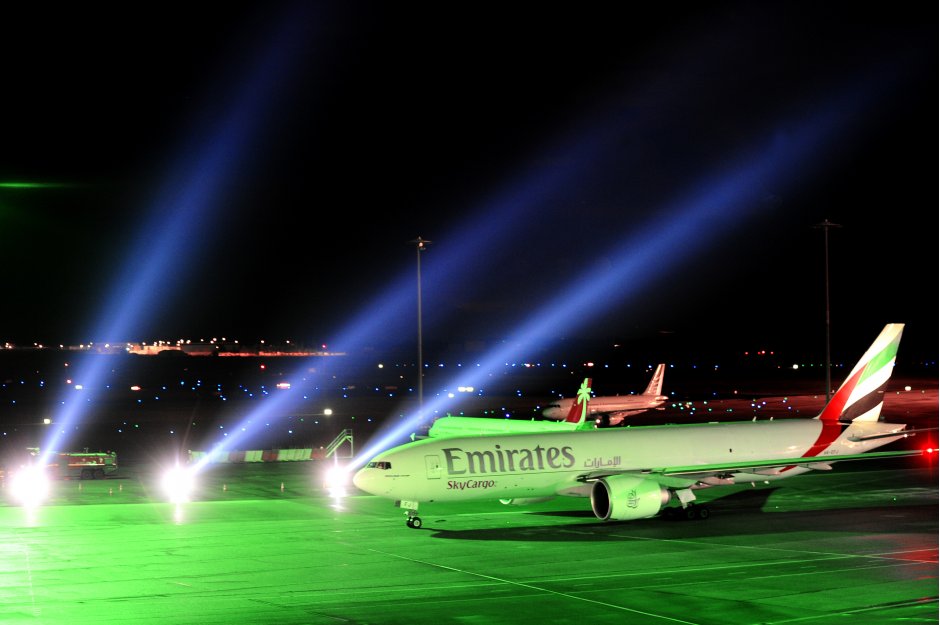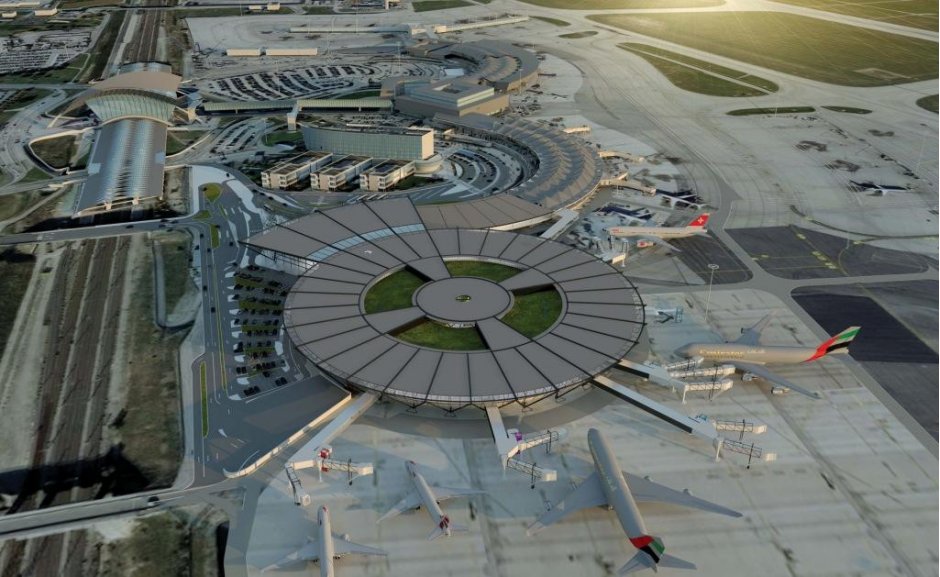The management of Lyon’s Saint Exupéry Airport is confident of securing additional long-haul links to North America and Asia in the future thanks to the success of its new hub connection service to Dubai International Airport that was introduced by Emirates Airline at the end of 2012. With most long-haul flights from France operating from the capital, the new route has proved popular over its first 18 months of operation and offered passengers an additional option for travelling to markets in the Middle East, Africa, Asia and into Oceania.
In an exclusive interview with The HUB ahead of World Routes, Aéroports de Lyon’s chief executive officer, Philippe Bernand, confirmed that international growth was the forefront of Lyon’s expectations for the year ahead as the facility seeks to grow both its short- and long-haul offering.
“Over the past eighteen months we can see that the arrival of Emirates Airline in Lyon has been a great success story and has completely met with our own ambitious expectations for the route. It has really succeeded in generating new traffic and can act as a platform for us further strengthening our route map into new markets,” he said.
A look at the airport’s traffic statistics for this year to date shows how the local market has changed, with the traditional domestic demand that has supported the airport of many years declining three per cent during the first eight months of 2014, while international traffic rose by 0.3 per cent: the latter now accounts for almost two thirds of airport’s passenger throughput.
In our analysis, below, we highlight annual departure seats from Lyon Saint Exupéry Airport and show the split between domestic and international capacity. The data shows that the airport surpassed the five million departure seats in 2008 and reached a record levle of over 5.7 millon in 2013, up 4.9 per cent on the previous year.
Data for August 2014 shows a growth of 0.8 per cent to 833,836 passengers, a month that has seen those flying with Air France decline 14.2 per cent while other airlines have grown traffic by 5.6 per cent. “We feel we are in a strong position to contribute to the economic and tourism development and influence of Lyon and its region – Rhône Alpes – whilst also becoming the second most popular airport in France and the main arrival point for the whole of the south-east of France,” said Bernand.
The arrival of Emirates at Lyon has been a major coup for the French airport especially due to the bilateral air service agreement between the United Arab Emirates (UAE) and France which severely limits capacity between the two markets. However, even the operation of a five times weekly link has enabled Lyon to enhance connectivity to a range of markets to the East.
Analysis of MIDT data shows that over 200,000 bi-directional O&D passengers a year fly between Lyon and destinations across Asia and Oceania. In its first full year of operations Emirates had secured a 23.1 per cent share of this demand in 2013, ahead of Lyon’s legacy operators of Air France (19.0 per cent) and KLM (8.6 per cent).

Lyon would really like to see the five times weekly Emirates schedule grow to a daily service to boost scale but traffic rights issues mean this is unlikely in the short-term. “Our opinion is we have the potential to grow initially to a daily operation and latterly with a second frequency to boost connection options but the French state are not willing to offer these rights,” said Bernand. “The demand is quite clearly there for this to work.”
The Emirates flight has provided new opportunities to link Lyon to markets across Asia and according to Bernand there are notable flows into Thailand - the most popular long-haul destination in this part of the world for outbound travellers – as well as the Indian Ocean leisure markets that popular with French travellers. “We also know it is boosting connectivity as far afield as Australia as we are seeing more Australians arriving in Lyon thanks to the Emirates and Qantas partnership,” he added.
However, the existing schedule does not offer the best connections into another key market for Lyon... China! Our analysis shows Shanghai and Beijing are already the third and fifth largest point-to-point markets in Asia from/to Lyon but are not efficiently linked to the French city via Dubai. Bernand believes there is sufficient demand to establish a regular link to either Beijing or Shanghai from Lyon and is a clear focus for the airport’s aviation marketing team.

Another long-haul target is the North American market with New York, currently the largest unserved North American market from Lyon with around 38,000 annual O&D passengers, a priority. Lyon currently only has a single link to North America with a seasonal flight by Air Transat to Montreal. Alongside extending this to a year-round basis, Bernand said the ambition is to get a non-stop link to a US hub. “I know this is a competitive market and on the wish list of many European airports, but I have the firm belief that our proposition is strong and our market can support such a transatlantic air service,” he explained.
Lyon does have a lot of potential thanks to housing a TGV station at the airport for the last 20 years and which offers fast connections across France that opens a wide, wide catchment areas to support new air services. “Not only can we provide the volume to support a route but we can prove a good yield from our catchment that will support the economic delivery of a transatlantic flight,” said Bernand.
This catchment will also support growth in short-haul markets from Lyon, which enjoys a good inbound and outbound passenger profile. Its focus has been on core European cities, traditional Mediterranean leisure destinations and emerging North African markets but there remain a few gaps on its network map mainly in Northern Europe. “We want to build across the Continent and complete our route map. The Nordic countries are one area for us to grow and Poland and Russia are definitely targets,” said Bernand.

But, it is not just about new routes and with a growing business clientele frequency on existing routes needs to be grown to support the demand of high yield travellers. Although the airport has seen its share of low-cost operations grow significantly over the past few years, mainly through the activities of easyJet, many city pairs are supported by a strong underlying business demand. As Bernand notes, “frequency for these passengers is critical”.
To meet the network ambitions Aéroports de Lyon is investing in a significant upgrade of airport infrastructure to better meet market demand. It is difficult marriage between the traditional domestic hub feed to Paris and regional operations flown by smaller regional aircraft and the requirements of contact gates for larger airliners. “Each requires its own special infrastructure but this cannot necessary be used to support another type of operation,” said Bernand. “We have had to maximise our offering for the international growth that we are experiencing and at the same time can provide a much needed upgrade to our customer experience.”
A key part of this is the construction of the future Terminal 1 and just a couple of months after World Routes in November 2014, the first stones will be placed for the building, which will allow the airport to increase its capacity to 15 million passengers by 2020. London architects Rogers Stirk Harbour + Partners (RSHP), designers of Heathrow’s Terminal 5 in London and Barajas Airport in Madrid, were appointed to design the new terminal last July.

The new terminal will cover roughly the same area (70,000m2) as all of the existing buildings combined and has been developed to what the architects describe as a ‘challenging brief’ to create a new identity for the site that remained in keeping with the high-calibre existing campus and didn’t detract from the distinctive TGV train station, designed by Santiago Calatrava.
RSHP’s solution is a circular building made up of bold, simple and elegant structural elements. The terminal will offer a spacious and clearly defined entrance, a hanging garden and large shopping area at the centre, which will enrich the travelling experience for passengers. Internally the facility will be designed to modern airport standards with a centralised security and huge commercial area.
The facility will be opened in a phased manner and will initially be available from 2016. Then, Lyon will be home to a modern airport which can develop its promoted status as one of the most efficient gateway to the Alps and provide the “best transport solution” and “shortest time transfer” for passengers destined for ski resorts currently served via Chambery, Grenoble and Geneva, according to Bernand.
In our analysis, below, we highlight the largest scheduled operators at Lyon Saint Exupéry Airport by departure seats in 2014, according to published schedules to the end of the year.






